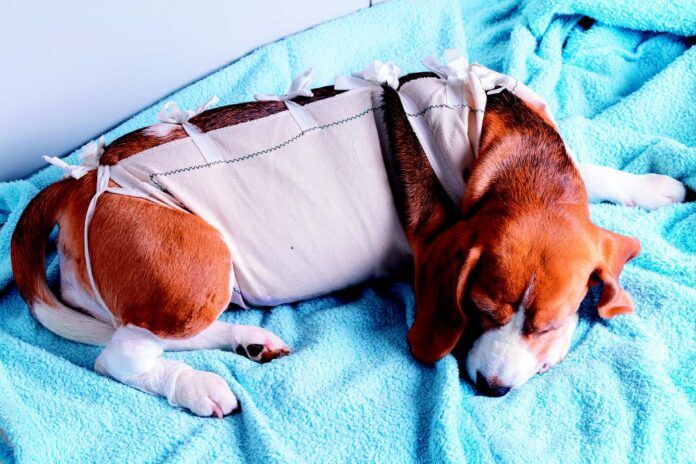“When I come out of the operating room to tell clients how an operation went, one of the most common questions I get is ‘How long will the recovery time be?’ says Tufts veterinary surgeon and Your Dog editor-in-chief John Berg, DVM. “I always ask, ‘What do you mean by recovery? When can the dog go home? When can she eat? When can she go off leash again and return to full exercise?’ There are a number of time points.”
The answers vary depending to some degree on whether it’s an old dog or a young one, Dr. Berg notes. Old dogs often won’t recover as quickly. “But it’s more about what type of surgery it was,” he says. “A minor surgery like removing a benign mass from the skin is different from a major abdominal or orthopedic surgery.” Following, some general rules of thumb on timing for post-operative healing. They don’t cover every dog in every instance. But they give a general idea.
- When can the endotracheal tube (breathing tube) come out? A dog has to be able to breathe on her own again once she comes out of anesthesia. The timeframe is variable, Dr. Berg says, but that generally happens 30 to 60 minutes after the surgery has been completed and the anesthesia has stopped.
- When can my dog be fed again? “Many dogs are on intravenous fluids after surgery, but they usually can be fed by mouth again by 5 to 7 pm that evening if the surgery was conducted in the morning or even the early afternoon,” Dr. Berg says. “We typically start with small amounts of food, and the dog builds back to her usual meal size at home.”
- When will my dog be allowed to walk on leash to go out and relieve herself? For a minor surgery, the dog can often walk within an hour of the procedure. For a major surgery, Dr. Berg says, the dog may have to remain still till the following morning.
- When can my dog go home? “A lot of times, the answer to that question is ‘the same day,’” Dr. Berg says. “But again, it depends on how involved the surgery was. Sometimes a dog has to remain in the hospital for one, two, or three days. It’s mostly about pain control. We can monitor and treat pain better in the hospital than owners can do at home. We certainly don’t want to keep a dog in the hospital longer than she needs to be. If we’re confident on day one that pain control is good, we’ll often send the pet home that day, usually with three to five days of additional pain medications.”
- When can I take off the cone collar? “You really want to prevent licking the incision,” Dr. Berg says. “People think animals can heal themselves by licking, but that’s not really true. Bacteria from the mouth can cause an infection where the skin is healing. It’s important to keep the cone on for two weeks. Many dogs dislike the collars, but they are infinitely better than the alternatives: treating infected incisions with antibiotics, or in more severe cases, surgery to open the incision, flush it, and place a temporary drain.
“I want to note that a cone collar will protect an incision located in the head or neck area, but may not prevent a dog from scratching an incision behind the collar with his hind legs. If the dog wants to scratch the incision,” Dr. Berg says, “the area may need to be protected with a bandage or leg sleeve or torso covering. (See the March 2021 Your Dog article, “No More E-Collar Misery,” for options.) Like the collar, the bandage or other covering can generally come off at the two-week mark.”
- When can my dog walk off leash and exercise freely again? As with the protective covering so the dog won’t lick, scratch, or bite at the incision site, it’s generally a 2-week period of keeping her quiet — as much as she might disagree with that timeframe and want to do more than just be led outside on leash. Even for minor surgeries, a 2-week period of controlled exercise with no running or jumping is best.
As far as how much actual walking she can do on the leash, it depends on the nature of the surgery, Dr. Berg says. After the removal of a minor bump, “she can probably go on fairly long leash walks without problems,” he comments. “On the other hand, with something like major orthopedic surgery or abdominal or chest surgery, exercise should be more minimal. Start out with short, slow, careful walks — out to go ‘to the bathroom,’ then back inside. There are gradations between ‘fairly long walks’ and ‘bathroom breaks’ depending on the type of surgery and the dog’s personality,” Dr. Berg says. “Your veterinarian will advise you on what amount of activity is right in that initial 2-week period. After that, a dog is usually good to go; however, a longer period of exercise restriction may be necessary for dogs having certain orthopedic or neurologic surgeries.”





